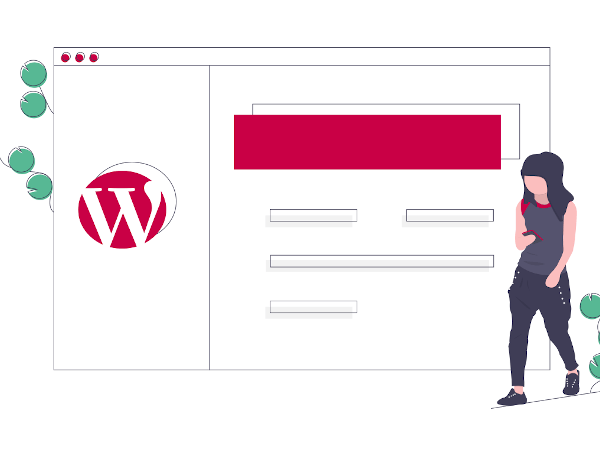
Shared Web Hosting vs Cloud Hosting – Which Is Best?
To have a site live on the Internet you’re going to need web hosting. But, how do you choose the right kind of hosting for your business? And what is the difference between cloud hosting vs. shared web hosting?
Web hosting can be complex and there are a lot of options. It’s easy to get lost, so don’t feel bad if you’re confused at the starting point.
There are more than a few services out there – shared hosting, VPS, cloud solutions, dedicated servers and, reseller hosting accounts more than enough to make your head spin. But knowing what each service encompasses could help you make a more informed choice.
So, today, we are going to try and clear the air by focusing on two of the industry’s most popular. Below we dive into the differences between cloud hosting and shared hosting. These are two of the most common hosting choices. Remember, there is no right choice for everyone; the right type for you depends upon the needs of your website.
What is Shared Hosting?
Shared Hosting is a popular option for any personal or business website that is just getting started online. It is sometimes called shared services or virtual hosting as multiple websites share the same server, thus reducing the cost for all.
Shared hosting is the process of having your website hosted on a server along with other users’ sites. Specifically a dedicated server is used for your files, your databases and your emails along with other users, basically sharing resources. Since the nature of hosting is that of optimizing resource usage, using a dedicated server for a single customer isn’t optimal for the hosting provider. Hence, the concept of shared hosting was born in which a group of users share a common server.
In this situation the user is sharing resources of said server with the rest of the group on that server. This is what is most commonly known as a node. Since most dedicated servers are powerful enough to host hundreds of users at the same time without breaking a sweat, this is an acceptable practice.
In the world of shared hosting, users are usually managed by what is called a control panel. For this purpose, hosting companies buy and use common hosting control panels. There are tons of good and well known hosting control panels but the most popular are cPanel and Plesk Onyx.
The control panel is responsible for controlling resources and security so as to hold all customers in good standing. The control panel is also in charge of managing e-mails and domain actions related to DNS and the like.
So to sum up: shared hosting is composed of a server (called a node) in which a group of users are all sharing resources via a control panel.
Pros and Cons of Shared Web Hosting
Even at first glance, there are plenty of benefits in favor of choosing a shared hosting provider.
Shared Web Hosting Pros
– Beginner-friendly — Most of the new clients have little to no idea on how to build a website. A great shared hosting provider has all the tools and services to back you up – website builders, software installation and issue resolution. Some even go as far as giving out development tips and helping with security optimization. Easy on-boarding is a top priority with shared hosts.
– Low cost — Sharing system resources means you are sharing the server costs as well, allowing this type of hosting to be much more affordable than others. There are plenty of great options within the £1/mo-£9/mo range, and some providers even offer introductory deals within a pound. And that’s not even mentioning the free trials that let you test a host before signing for a long-term deal.
– Easy management — Clients often abandon their web project, because they feel things are getting too complex. You have no server administration responsibilities on a shared configuration, meaning you can focus solely on getting more exposure. And if you find content management systems overly complicated, you can always resort to a simplified site building tool and put up a page quickly and effortlessly.
Shared Web Hosting Cons
But along with all the good things, there are inevitably some risks and dangers with a shared server environment.
– Slower performance — Sharing your resources with others, you can never be too sure if another user is taking too much and slowing down your site performance. To add to that, shared servers are often overcrowded, and that puts the machine under constant load. This can result in slower speeds and sometimes even service downtime.
– Less security — Shared accounts are often interconnected, so if a hacker breaches one user — he can damage them all. You can mitigate the damage by further fool-proofing your account, but the overall server security is beyond your control. Checking the setup of your potential host is of the utmost importance.
– No administrative control — If this is not your first rodeo in web hosting, you will naturally look for a solution that comes with more flexibility and options for fine customizations. Shared hosting allows no admin root access so you can forget about full control. That’s understandable, really — messing with the server settings can affect all other clients on the same machine.
What is Cloud Hosting?
Cloud Hosting is the newest form of web hosting that is gaining great popularity over the recent years. The concept of cloud hosting is principally “Divide and Rule”. The cluster of servers that work together to meet the resources required for maintaining your website is termed as a cloud. This works wonders for your service up-time because even if your hardware fails, there are cached copies of your website ready to serve as a backup.
But that’s not even half of it.
Due to its advanced setup, cloud reduces the load on your web server, scales easily, and offers better overall security.
The services have been getting increasingly popular in the last few years, and over 90% of online enterprises utilize some kind of a cloud computing platform today. Businesses see in the technology an easy way to eliminate the needs for on-site equipment and reduce IT costs.
Any hosting service can reside on the cloud, and providers have been offering VPS servers, WordPress solutions, even shared accounts that are powered by this now-mainstream tech. In this kind of scenario, the servers are virtualized so the resources are also virtual. This means that when there is sufficiently high demand for resources, the hosting company can add new servers to the virtual node to expand the amount of resources without having to move customers out of that node. This kind of setup is ideal for expansion as the company does not have to worry about resources and has no need to relocate users. A cloud structure can be expanded and expanded to not only to a couple of servers but hundreds of them!
Pros and Cons of Cloud Hosting
There are a lot of things that make cloud hosting services so attractive. The most notable are:
Cloud Hosting Pros
– Scalable resources — When it comes to scaling your assets on a per-need basis, there is no better choice than cloud hosting. In a standard shared setup, if you run out of storage space, bandwidth, or RAM, you would have to upgrade your whole account to the next tier. Cloud hosting lets you adjust resources according to the current usage, ensuring your website can run smoothly even during traffic spikes.
– Optimized performance — Utilizing a vast network of servers guarantees great worldwide coverage and can really skyrocket a website. Especially useful for high-traffic sites. A reliable cloud configuration will handle even the most severe traffic spikes without putting much load on your hardware.
– Uptime reliability — Every web server is made up of mechanical parts, and they will inevitably fail after some time or excessive usage. Cloud hosting comes with increased redundancy, so your website availability will never be affected if anything unexpected happens. Even considerable traffic loads and DDoS attacks won’t be able to bring your service down.
Cloud Hosting Cons
Still, we have to consider some drawbacks that still prevent cloud services to gain even more popularity:
– Costlier plans — Even though prices for cloud solutions are getting more and more affordable, this type of hosting doesn’t fit any pocket. Sure, you get billed on a per-use basis, but accompanying service fees and unexpected bandwidth loads might easily put your balance in the red. Keep a close eye on your resource consumption at all times to avoid unpleasant surprises at the end of the month.
– Limited flexibility — Moving your website data in the cloud, you are more or less giving away control. If you have a trustworthy provider to look after things, that wouldn’t be such an issue. But the wrong host can easily open a doorway for all kinds of attacks. And there is little you can do to protect yourself.
– Privacy concerns — There have been a lot of discussions of how secure cloud hosting really is, especially after numerous leaks have rocked the internet in recent years. Fact of the matter is, as long as there are copies of your data cached in multiple places, a single weak spot is enough for a hacker to gain unauthorized access. Taking your own security precautions like securing passwords and enabling multi-factor authentication is a must when using cloud hosting solutions.
What is the difference between Cloud Hosting and Shared Hosting?
A website hosted on shared hosting is placed on the same server as many other sites, that could range from a few to hundreds. In this setup, all websites share Storage, RAM and CPU from the same server. On the contrary, our cloud hosting services offer nearly unlimited ability to handle traffic spikes. Because of a virtualization layer with a separate CEPH storage cluster and up-gradable CPU Core and RAM model. In case if one storage instance is rendered inaccessible, the other instances will be able to serve the stored information due to 3N redundancy.
Which one should you choose?
Now that we’ve compared shared hosting vs cloud hosting, figured out the essentials, and outlined their advantages, it’s time to see who are the best types of clients for each service.
Cloud hosting is widely seen as a better option to shared hosting. Because of its ability to handle large amounts of traffic, its improved security protection, and its reliability.
However, these extras do come at a cost, and most cloud hosting options are more expensive than shared hosting plans. But if you’re planning on growing your site and you need a site with a high performance rate; then the advantages then cloud hosting will probably be the best option for your needs.
That being said, if you’re just getting started and have a very small or nonexistent budget, a shared hosting plan may be a good option for you.
Whatever service you choose, now you have a much better idea of both pros and cons.


